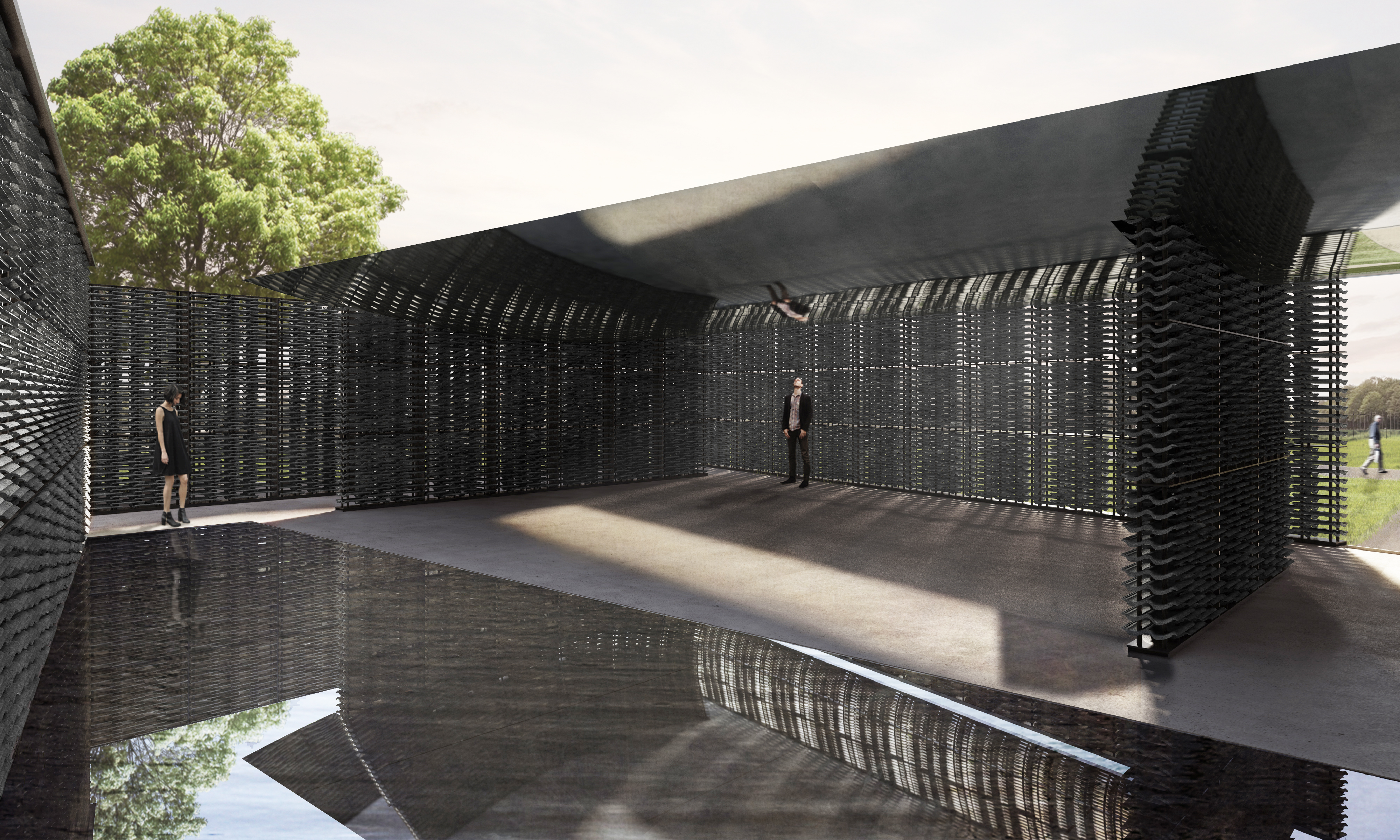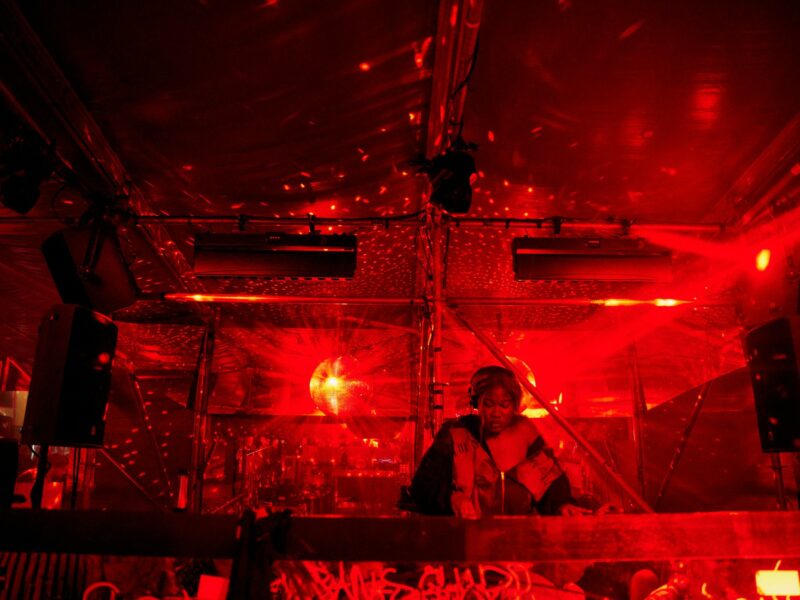The Mexican architect Frida Escobedo, celebrated for dynamic projects that reactivate urban space, has been commissioned to design the Serpentine Pavilion 2018. Harnessing a subtle interplay of light, water and geometry, her atmospheric courtyard-based design draws on both the domestic architecture of Mexico and British materials and history, specifically the Prime Meridian line at London’s Royal Observatory in Greenwich.

Escobedo (b. 1979, Mexico City) is the 18th and youngest architect yet to accept the invitation to design a temporary Pavilion on the Serpentine Gallery lawn in Kensington Gardens. This pioneering commission, which began in 2000 with Zaha Hadid, has presented the first UK structures of some of the biggest names in international architecture. In recent years, it has grown into a hotly anticipated showcase for emerging talent, from Sou Fujimoto of Japan to selgascano of Spain and Bjarke Ingels of Denmark, whose 2016 Pavilion was the most visited architectural and design exhibition in the world. Serpentine Galleries Artistic Director Hans Ulrich Obrist and CEO Yana Peel selected this year’s architect, with advisors David Adjaye and Richard Rogers. The Serpentine Pavilion 2018 is sponsored by Goldman Sachs in its fourth year of support.
Escobedo’s Pavilion will take the form of an enclosed courtyard, comprised of two rectangular volumes positioned at an angle. While the outer walls will be aligned with the Serpentine Gallery’s eastern façade, the axis of the internal courtyard will align directly to the north. Internal courtyards are a common feature of Mexican domestic architecture, while the Pavilion’s pivoted axis refers to the Prime Meridian, which was established in 1851 at Greenwich and became the global standard marker of time and geographical distance.
British-made materials will be used in the Pavilion’s construction, chosen for their dark colours and textured surfaces. A celosia – a traditional breeze wall common to Mexican architecture – will here be composed of a lattice of cement roof tiles that diffuse the view out into the park, transforming it into a vibrant blur of greens and blues. Two reflecting elements will emphasise the movement of light and shadow inside the Pavilion over the course of the day. The curved underside of the canopy will be clad with mirrored panels, and a triangular pool cast into the Pavilion floor will trace its boundary directly beneath the edge of the roof, along the north axis of the Meridian. As the sun moves across the sky, reflected and refracted by these features, visitors may feel a heightened awareness of time spent in play, improvisation and contemplation over the summer months.
Escobedo’s prize-winning work in urban reactivation ranges from housing and community centres to hotels and galleries. In 2006, she founded her practice in Mexico City, with significant national projects including the Librería del Fondo Octavio Paz and an extension of La Tallera Siqueiros gallery in Cuernavaca. Her designs have featured at the Venice Architecture Biennale (2012 and 2014), the Lisbon Architecture Triennale (2013), and in San Francisco, London and New York. Recent projects include Stanford University’s Graduate School of Business and social housing projects in Guerrero and Saltillo, Mexico. She lectures nationally and internationally, and has won multiple awards and accolades.
Escobedo’s design enhances the Serpentine Pavilion’s reputation as a space of encounter and shared experience, following Francis Kéré’s acclaimed 2017 Pavilion, a bright and airy structure that was inspired by the tree at the heart of his hometown in Burkina Faso and visited by more than 200,000 people.
About
The annual Serpentine Pavilion Commission has become a global platform for architectural experimentation, presenting projects by some of the world’s greatest architects, from Zaha Hadid in 2000 to Francis Kéré in 2017. The brief is to design a temporary Pavilion that is used as a community hub and café by day and a forum for learning, debate and entertainment at night. Each Pavilion is sited on the Serpentine Gallery’s lawn for four months and the immediacy of the commission has made it a pioneering model worldwide.
The selection of an architect, someone who has consistently extended the boundaries of architectural practice but is yet to build in England, is led by the curatorial approach that guides all Serpentine programming: introducing the urgency of art and architecture to the widest possible audiences. The Serpentine Pavilion is consistently in the Top 10 most visited architecture exhibitions in the world. There is no budget for the project, which is realised entirely through sponsorship, in-kind support and the sale of the Pavilion.
The Serpentine Pavilion 2018 will once again be a platform for Park Nights, the Serpentine’s annual programme of experimental and interdisciplinary evenings on selected Fridays. Practitioners in the fields of art, architecture, music, film, theory and dance will be commissioned to create new, site-specific works in response to Escobedo’s design, offering unique ways of experiencing architecture and performance, sponsored by COS. Building on its 2017 success, Radical Kitchen also returns to the Pavilion on selected Thursday lunchtimes, inviting community groups, artists, activists, writers and architects to form connections through food. This programme of workshops, performances and talks will address geological time, empire and movements, inspired by the ideas behind Escobedo’s Pavilion design. The Architecture Family Pack and Programme, sponsored by COS, will give children and their families the chance to explore the Serpentine Pavilion from playful and original perspectives.
The Serpentine Summer Season continues with exhibitions of Tomma Abts at the Serpentine Sackler Gallery (7 June-9 September) and Christo & Jeanne Claude at the Serpentine Gallery (19 June-9 September).
The Serpentine Pavilion 2018 will be open every day from 10am to 6pm, excluding 18/19 June when it will close, re-opening at 1pm on 20 June.







